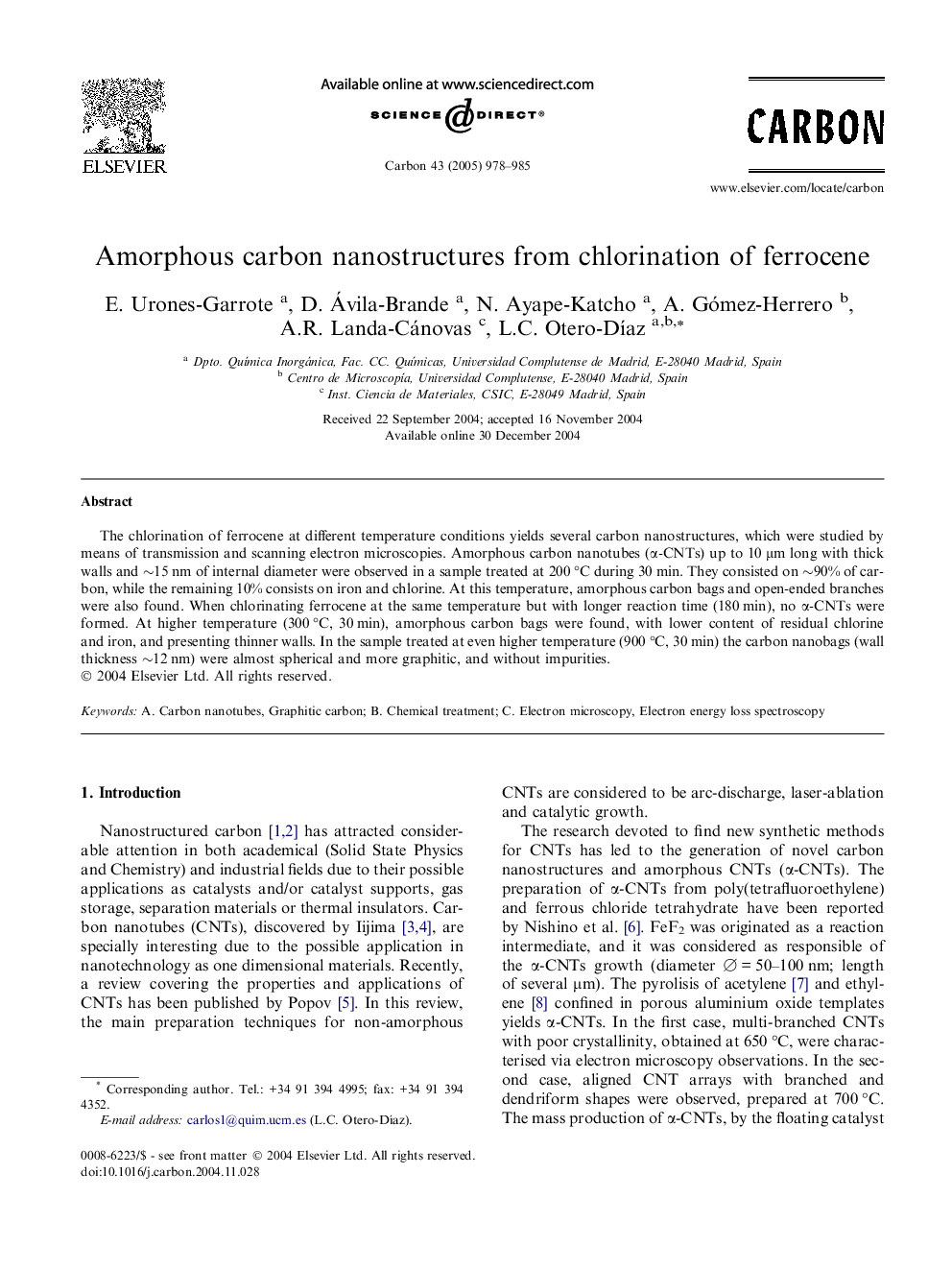| Article ID | Journal | Published Year | Pages | File Type |
|---|---|---|---|---|
| 10610893 | Carbon | 2005 | 8 Pages |
Abstract
The chlorination of ferrocene at different temperature conditions yields several carbon nanostructures, which were studied by means of transmission and scanning electron microscopies. Amorphous carbon nanotubes (α-CNTs) up to 10 μm long with thick walls and â¼15 nm of internal diameter were observed in a sample treated at 200 °C during 30 min. They consisted on â¼90% of carbon, while the remaining 10% consists on iron and chlorine. At this temperature, amorphous carbon bags and open-ended branches were also found. When chlorinating ferrocene at the same temperature but with longer reaction time (180 min), no α-CNTs were formed. At higher temperature (300 °C, 30 min), amorphous carbon bags were found, with lower content of residual chlorine and iron, and presenting thinner walls. In the sample treated at even higher temperature (900 °C, 30 min) the carbon nanobags (wall thickness â¼12 nm) were almost spherical and more graphitic, and without impurities.
Keywords
Related Topics
Physical Sciences and Engineering
Energy
Energy (General)
Authors
E. Urones-Garrote, D. Ávila-Brande, N. Ayape-Katcho, A. Gómez-Herrero, A.R. Landa-Cánovas, L.C. Otero-DÃaz,
